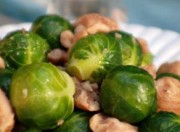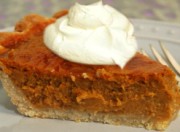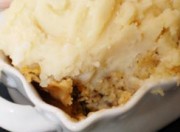Getting Fresh
A Honey of a Crisp
Remember the Jimmy Buffet song Son of a Son of a Sailor? Well that’s kind of what the Honeycrisp apple is. Somewhere in the early 1920’s, in a marriage arranged by the Geneva Research Station in New York, the Macintosh apple (dating back to the 1800s in Ontario, Canada) and The Jersey Black apple (an old American variety) were crossed – and the Macoun apple was created.
The Macoun was a proud child being that it had such prominent parents. It had the squatty form and intense flavor of the Macintosh, with the deep color and extra crispness of the Jersey Black. That’s one side of the family.
On the other side of the family we find the Haralson Apple, which originated in 1922 thanks to the University of Minnesota Agricultural Experiment Station. The Haralson is a crisp, tart white-fleshed apple great for out-of-hand eating and cooking. Also in the mix is the Golden Delicious apple, which was introduced in the late 1800’s in West Virginia. When the Haralson and the Golden Delicious were crossed by The Minnesota HorticultureResearchCenter in 1970, the result was the Honeygold apple, boasting all the characteristic of the two apples combined.
When the Macoun and the Honeygold got together, the Honeycrisp was born; the son of a son of an apple which has all the characteristics of all of the illustrious ancestors described above.
In my market, Honeycrisp is a real winner and its popularity is growing fast – so fast that I am seeing this apple elbow its way to the top of the list, threatening to overtake number one Fuji (just as Fuji did to Red Delicious seventeen years ago). While these two apples play king of the hill I will make a prediction; if the Honeycrisp doesn’t take the Fuji’s place completely as the most popular apple on the produce stand, it will definitely sit right next to it.
The Honeycrisp apple is the perfect salad apple combining sweet with tart, crispness with juiciness. I have pointed this apple out to many of the chefs from surrounding restaurants that frequent my produce store, and they have all come back for more. Out-of-hand eating, sauces and baking are all great uses for this versatile gem. It’s also the perfect apple for kids and teens for healthy snacking because they love the crunch, the juice and the flavor. Okay ‘nuff said here; like an old Indian food distributor used to tell me “once you try it, you can’t deny it.”
The Honeycrisp apple is still a patented variety, which means growers must obtain a license to plant it. With fruit, as with real estate, location is everything. The Honeycrisp thrives at higher elevations, such as the WashingtonState orchards of the Rainier Fruit Company. The cool air that flows off the Cascade Mountains is credited with creating a dense cell structure that leads to a very crisp apple with a crunchier bite. New York and Michigan apple growers are also offering Honeycrisp apples in their mix, and have had favorable results.
Northern Michigan Apple Growers have already created a new variety called SweeTango; a cross between the Honeycrisp and a cultivar apple called Zestar. When the SweeTango gains some speed, and I’m positive it will, we’ll revisit it. For now, I’ll wrap up with a closing verse from Buffet: “where it all ends I can’t fathom my friends.”
*Gold Delicious is believed to have originated from a Grimes Golden apple which is similar.







